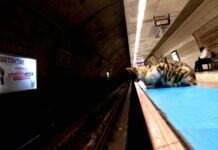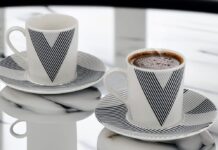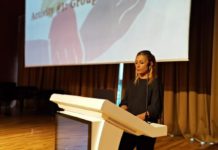The IKSV 4th Istanbul Design Biennial: A School of Schools opened its doors on Saturday 22 September to an eagerly awaiting public. Under the slogan “design as learning and learning as design”, this year’s biennial aims to explore new methods and spaces of learning and education, emphasizing doubt and thoughtful questioning. Doubt, as in the work of 17th century philosopher René Descartes, is used as a tool here – not in an epistemological way as in the reality of nature, but as a curatorial framework where current design education is questioned.
With this year’s theme of “A School of Schools”, the 4th Istanbul Design Biennial tests the expanded notion of design and the potential for what a biennial can be, under the direction of Deniz Ova and curation of Jan Boelen. Associate Curator Vera Sacchetti and Assistant Curator Nadine Botha have remarked that this biennial is an ‘active’ one, with several venues reserved as dedicated spaces of learning. At the press conference, an example exercise from designer Vivien Tauchmann perfectly demonstrated how we can embody knowledge (in this case, the knowledge of how to make cotton) without explanation but instead through experience.
This year’s biennial takes place across six venues, interacting with each other without a designated central location: Akbank Sanat – the “Unmaking School”, Yapı Kredi Kültür Merkezi – the “Currents School”, Pera Museum – the “Scales School”, Arter—the “Earth School”, Studio X – the “Digestive School”, and Salt Galata – the “Time School”. Thus far, I’ve personally had the privilege to visit three of the venues, and would like to give a preview on the works I’ve enjoyed the most.
Akbank Sanat: Unmaking School
“Unmaking School emphasizes that the irrepressible human instinct to be creative is a pedagogical dynamo that drives innovation, redefines work, and reshapes our cities.”
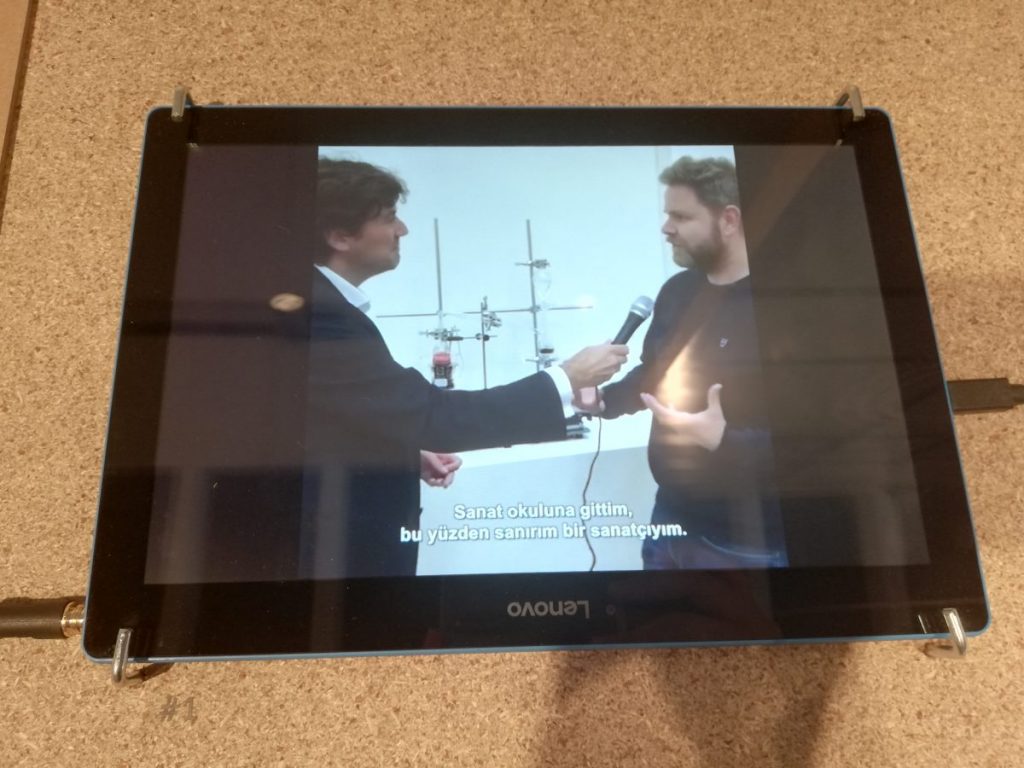
One of the first things that caught my attention at Akbank Sanat was a video covering the installation titled The Real Thing by Helmut Smiths. The name alludes to an old slogan of Coca-Cola, with this inventive installation actually taking the water out from the popular beverage, and thus making the water “the real thing”. In the video, Smiths explains how he came up with the idea after being shocked to find out that producing 1 liter of Coca-Cola requires 2 liters of drinking water, and how in some countries finding water is difficult while buying the famous soda is easy.

In Aliki van der Kruijs’s Made by Rain, the designer explains how she invented the technique of ‘pluviography’, drawing with rain, a weather condition not too uncommon for her country of the Netherlands. There are two methods she uses in pluviography, one being “analog” and the other “digital”. Utilizing both techniques, the designer hopes to create a new relation with the world and admiration for rain, instead of the complaints she regularly hears from the citizens of the Netherlands.
The Post-Labouratory by Ottonie Von Roeder brings another perspective on robots’ integration into our everyday lives and makes the viewer question how the idea of labor would change if robots took over chores that people don’t want to do, and yet feel like they have to do it for status. With the motto “Liberate from labor, free to work!”, these robots make us question what would happen when people from all classes and backgrounds can have leisure time, when our current identities are constructed around the salaried work we feel we must have. According to Von Roeder, this idea “liberates us from the idea of necessity of labor”. The robot that Von Roeder created utilizing a tea maker is presented at the venue, and this robot has taken to colloquial speech with remarks such as “Gerçekten sıcak bir hava var,” (It’s really hot in here) and “Her zaman işler olduğu gibi yoğun,” (As always, the work has been busy).
Arter: Earth School
“Earth School asks what natural is, what disaster is, what progress is, and who is in charge when the planet and humans are forced to renegotiate our precarious relationship.”

As a board game enthusiast, one of my favorite installations in this venue is a board game designed by Janna Ullrich called Quantified. I believe this game is both a reality and a critique of the current situation of our societies, and it seems like Ullrich tries to optimize these social systems by making its players really think. The goal of the game is for every player to achieve human rights, yet there are many layers that players need to consider to achieve that goal. Some players will have illegal jobs, and every player leaks data in everything they do, so “the government” in the game can have control over the players. There are also special cards designed for a dictatorial government, and once a player has three of these cards, the game ends since one cannot have human rights under such conditions.
Atelier Luma Algae Lab has worked with Bilgi University and have created 3D algae materials, as a solution for the plastic waste created every day. They believe that algae will be important in the future as solutions to waste. It was interesting to see that the future importance of algae was mentioned twice by different artists in the venue.
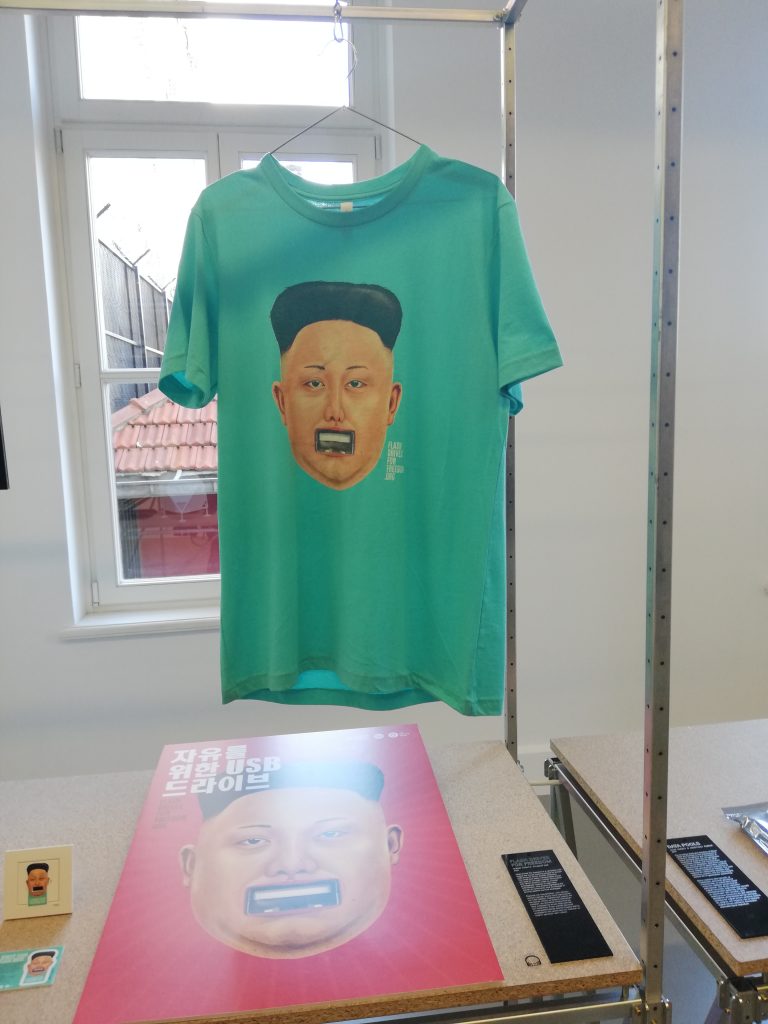
Flash Drives for Freedom by Human Rights Foundation is a project that has started by the defectors that settled to South Korea from North Korea. In this project, USB flash drives from all over the world, filled with short videos of the world are smuggled to counter North Korea’s propaganda. In practice, some of these flash drives found their way into the country. With this project, the group emphasizes the power of community and knowledge over a high-tech intervention.
Theo Deutinger’s Europe in Africa is a proposal for a new artificial island to be built between Tunisia and Italy to create a safe zone for people who would like to escape their country and reach Europe. In the proposal’s explanation, it says, “The aim is to prove discussion about a secure place for people,” and “Rather than a realistic design solution, Europe in Africa embraces the controversies and problematics of its position as a means of preparing for imaginative alternatives.” Yet, even in this alternative proposal, what struck me most is that a ferry from Africa to this land EIA exists, but a ferry from EIA to Italy is not mentioned at all, which made me as a viewer think about the political position of Europe and how this position is prevalent in this alternative solution. It further made me question how this alternative solution came about in the first place, rather than making people integrate in Europe with their own belief systems intertwined with the values of Europe itself.

Yapı Kredi Kültür Merkezi: Currents School
“Currents School explores information networks, spheres and connections—both digital and analogue, abstract and embodied — to critically examine technologies and hierarchies”.
Fugu School by Åbäke is about the Fugu fish consumed in Japan. In Japanese culture, only specially trained cooks can serve this dish, due to its poisonous nature. The designer offers a different perspective on the education system by comparing the Fugu fish to it – just as the Fugu fish is poisonous when it is not cleaned well by experts, so too would the education system be. The designer has also been influenced by street graffiti in Karaköy, this fish’s new habitat since it was found off the coast of Turkey in 2003. The Fugu fish drawings over many movie and concert posters in this venue allude to how the education system is in every domain.
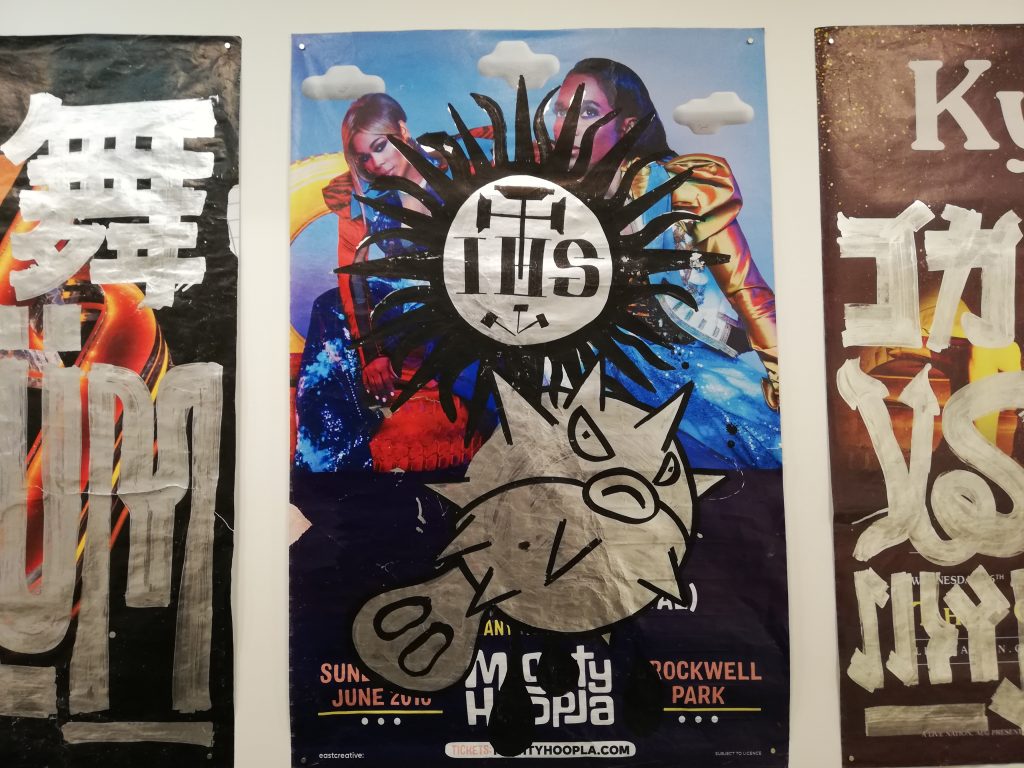
Ebru Kurbak’s Infrequently Asked Questions was created after contemplating the loss or devaluation of knowledge after migrating to another country. It states, “The displayed selection of migrated knowledge reminds us of something we often forget: Values of things are social constructs, not absolute facts,” as an explanation of the work. Kurbak here tries to showcase some of the skills that were once important for the emigrated but are obsolete in their new environment, such as waxing and cleaning a fish, and asks “a simple question to newcomers in Austria: What are you good at?”
Fortunately for me, there are three more venues to experience to complete the biennial experience. I strongly recommend everyone to go to visit all the schools to doubt current systems and contemplate on a better, more innovative world. The IKSV 4th Istanbul Design Biennial: A School of Schools ends on Sunday 4 November.
Images courtesy of the author.




